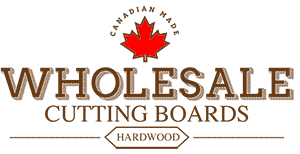Blog
What is the Difference Between a Chopping Block and a Cutting Board?
Chopping blocks and cutting boards are somehow used interchangeably when talking about kitchen utensils. However, is there, after all, any difference between the two? Well, yes, design, purpose, and material make a significant difference. In this article, we look into the differences between a chopping board and a cutting board, which will, in turn, help you decide better at the time of purchase for your culinary needs.
1. Defining Chopping Boards
A chopping board is larger and thicker than others, mainly applied for heavy duties. It is very helpful because it allows one to chop through large volumes of vegetables, meat, or any other ingredient that usually requires more force. These types of boards are practical and perfect for tasks such as:
- Cutting a whole chicken into smaller pieces
- Dicing large squash
- Mincing herbs with a mezzaluna
Key Features of Chopping Boards:
- Thickness: Chopping boards are thicker compared to cutting boards, making them durable with limited chances of deforming over time.
- Material: They are often made from hardwood like maple, walnut, or bamboo, as these materials withstand heavy chopping.
- Size: Chopping boards are larger, providing enough space for heavy-duty tasks.
2. Cutting Boards Understanding
Cutting boards are made for lighter duties such as slicing bread, cutting fruits, or preparing sandwiches. They are usually thinner and lighter, making them easier to manage compared to a chopping board.
Key Features of Cutting Boards:
- Thickness: Cutting boards are thinner, making them portable and easy to store.
- Material: Plastic cutting boards are popular for their affordability and ease of cleaning, while wooden ones are favored for their aesthetics and durability.
- Purpose: They are best suited for tasks that don’t require excessive force, such as slicing or dicing.
3. Material Matters: Choosing the Right Board
The material of your board plays a significant role in its functionality and longevity. Common materials and their suitability are outlined below:
Hardwood
Best for: Chopping boards
Why: Durable, self-healing, and knife-friendly. Hardwoods such as maple and walnut resist splitting under heavy chopping.
Plastic
Best for: Cutting boards
Why: Lightweight, easy to clean, and dishwasher-safe. Plastic boards are ideal for quick tasks and come at lower prices.
Bamboo
Best for: Chopping and cutting boards
Why: Eco-friendly, durable, and resistant to knife marks. Bamboo performs well for both heavy kitchen work and lighter tasks.
Glass
Best for: Decorative purposes
Why: Non-porous and easy to clean but hard on knives. Glass boards are better suited for presentation rather than real work.
4. When to Use a Chopping Board
Chopping boards are ideal for tasks that require maximum stability and toughness. Examples include:
- Heavy Chopping: Cutting through bones or dicing large root vegetables.
- Large Quantities: Preparing meals for a crowd often involves more ingredients, making a large chopping board essential.
- Professional Kitchens: In commercial settings, chefs rely on heavy-duty chopping boards to handle rigorous use.
5. When to Use a Cutting Board
Cutting boards are better suited for lighter, more precise tasks. Consider these scenarios:
- Quick Prep: Slicing an apple or preparing a sandwich is much easier on a light cutting board.
- Portability: Their lightweight nature makes cutting boards great for compact kitchens and outdoor food preparation.
- Specialized Tasks: Bread cutting boards and those for cheese serving are specialized uses of cutting boards.
6. Maintenance and Care Tips
Proper care will help lengthen the life of both chopping and cutting boards. Here are some tips:
Wooden Boards
- Cleaning: Wash in warm, soapy water and dry immediately. Do not soak.
- Oiling: Apply food-grade mineral oil regularly to prevent drying and cracking.
- Sanitizing: Use vinegar and water to disinfect.
Plastic Boards
- Cleaning: Dishwasher-safe for easy cleaning.
- Replacement: Replace when deep grooves are present, as they can harbor bacteria.
Bamboo Boards
- Cleaning: Wash as with wooden boards, avoiding harsh detergents.
- Oiling: Periodic oiling benefits the surface.
7. Which One to Choose?
Both chopping and cutting boards are essential, depending on your needs and cooking frequency. For big meals or tough ingredients, a heavy-duty chopping board is ideal. For everyday use or quick prep, a lightweight cutting board is more practical.
8. Conclusion
Although the terms “chopping board” and “cutting board” are often used interchangeably, knowing the differences will help you select the right one for your needs. Based on material, size, intended purpose, and maintenance, each type has distinguishing features that excel in specific tasks.
Quality boards can elevate your cooking experience by making meal preparation easier, safer, and more enjoyable. Whether you are a home cook or a professional chef, the right board can make all the difference in the kitchen.
